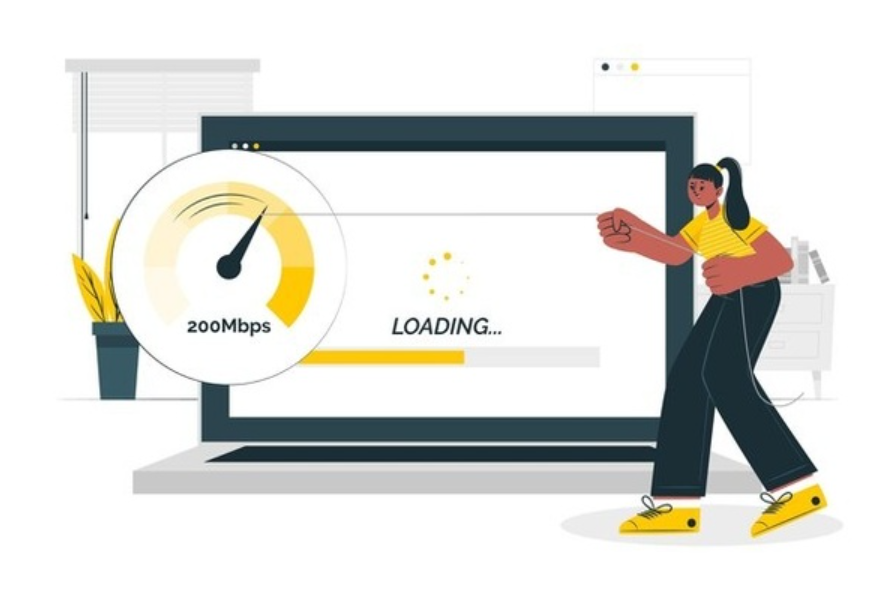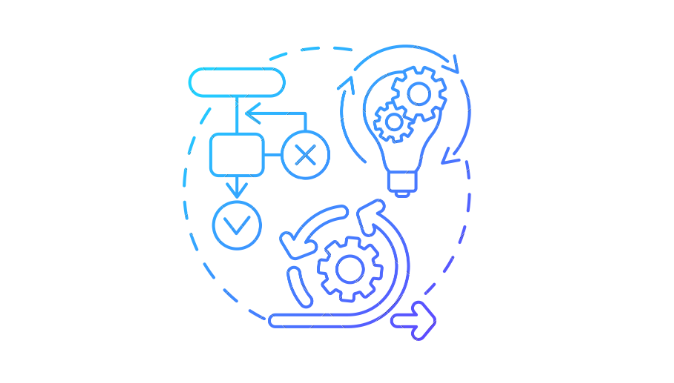In the fast-paced digital landscape, where attention spans are dwindling, a high bounce rate can spell doom for your online presence. Bounce rate, the percentage of visitors who navigate away from your site after viewing only one page, is a critical metric in the realm of conversion optimisation.
Understanding Bounce Rate
Bounce rate, a fundamental metric in web analytics, serves as a crucial indicator of user engagement on a website. It represents the percentage of visitors who navigate away after viewing a single page, without interacting further.
One of the primary reasons bounce rate matters lies in its reflection of user engagement. A high bounce rate suggests that visitors are not finding the content they seek or that the webpage fails to captivate their interest. Conversely, a low bounce rate indicates a higher level of interaction and exploration, signifying that users are navigating through multiple pages.
The relevance and quality of content form another focal point of bounce rate analysis. A quick departure from a webpage may signify a mismatch between user expectations and the content provided. This insight is invaluable for business owners looking to enhance their content strategy and tailor it to meet the needs of their audience effectively.
Moreover, bounce rate serves as a window into website usability. If users encounter difficulties in navigation or accessing information, they are more likely to leave the site promptly. By monitoring bounce rates, businesses can identify potential pain points in user experience and take corrective measures to enhance website usability.
The symbiotic relationship between bounce rate and conversion rates underscores their importance in the digital landscape. A high bounce rate can adversely impact conversion rates, as visitors may exit the site before completing desired actions, such as making a purchase or filling out a form. This underscores the need for a seamless user journey to maximise both engagement and conversion.
Search engine algorithms, particularly those of major players like Google, consider user engagement metrics when determining a website’s relevance and quality. A high bounce rate may influence a site’s search engine rankings, making it imperative for businesses to prioritise user experience and engagement to maintain or improve their online visibility.
Measuring Bounce Rate Effectively

Utilising Analytics Tools
In the intricate realm of digital analytics, achieving precision in measuring bounce rates necessitates a deep dive into the arsenal of analytics tools. Google Analytics, standing as a ubiquitous powerhouse, takes centre stage in this pursuit. Proficiency in these tools extends beyond a mere technical requirement; it forms the bedrock for businesses striving to make informed, data-driven decisions. Google Analytics, with its multifaceted features, empowers organisations to dissect user interactions with surgical precision, revealing patterns that serve as the foundation for strategic enhancements.
The use of analytics tools demands not just technical mastery but a strategic mindset. Organisations can leverage the capabilities of Google Analytics not only to quantify bounce rates but also to delve into the intricacies of user behaviour. This in-depth analysis goes beyond a surface-level percentage, providing a nuanced understanding of how users interact with a website. By pinpointing pages with elevated bounce rates, businesses can meticulously examine the factors contributing to swift exits, whether they be issues related to content relevance, design aesthetics, or navigation complexities.
Interpreting Bounce Rate Data
While analytics tools offer a wealth of data, their true value emerges when professionals adeptly interpret and translate this information into actionable insights. Bounce rate data, when approached with a discerning eye, transcends a mere indication of areas requiring improvement; it evolves into a source of intelligence that unveils the ‘why’ behind user behaviours.
Grasping the nuances of bounce rate data involves a meticulous analysis of user interactions, demographics, and the contextual backdrop in which these behaviours unfold. For example, a high bounce rate on a specific page might be traced back to a misalignment between user expectations and the content provided. By deciphering these patterns, businesses can tailor their optimisation strategies to specifically address identified pain points, thereby enhancing the overall user experience.
Common Causes of High Bounce Rates
Slow Page Load Times

The intricate dance between page speed and bounce rate is not merely a technical nuance; it stands as a critical determinant of user satisfaction in the digital realm. In an era where the pace of the online landscape is ever-accelerating, the demand for swift and seamless interactions becomes paramount. Slow page load times can lead to user frustration, prompting swift exits and contributing to the alarming rise in bounce rates. Addressing this issue involves not just technical optimisation but a holistic approach to enhance the overall user experience.
Irrelevant Content and Poor Design
In the vast expanse of the online world, aesthetics and substance are not mutually exclusive entities. The marriage of design and substance becomes a powerful tool in keeping users engaged, underscoring the integral role of visual appeal in the broader context of user experience. Websites with irrelevant content or poor design aesthetics risk losing the interest of visitors, prompting them to bounce away in search of a more visually appealing and content-rich destination. Businesses must recognise the symbiotic relationship between design and substance to create an online environment that captivates and retains user attention.
Lack of Mobile Optimisation

The era of mobile dominance necessitates a dedicated focus on mobile-friendly design. The seamless transition between devices has evolved from a desirable feature to a cornerstone for reducing bounce rates. In an era where users expect a consistent and optimised experience, regardless of the screen size, neglecting mobile optimisation can have profound consequences. Websites that fail to adapt to the mobile landscape risk alienating a significant portion of their audience, contributing to higher bounce rates. Prioritising mobile responsiveness and user-friendly design is imperative in meeting the evolving expectations of today’s tech-savvy and mobile-oriented users.
Misleading or Ineffective Calls to Action
Calls to action (CTAs) function as the bridges between user engagement and conversion. Crafting compelling and clear CTAs transcends the realm of mere copywriting; it emerges as a strategic move to guide users seamlessly through their journey on the website. Misleading or ineffective CTAs can disrupt this journey, leaving users disoriented and more likely to abandon the site without taking the desired actions. Businesses need to invest in strategic CTA placement, compelling copy, and a seamless user journey to enhance engagement and reduce bounce rates.
Techniques for Bounce Rate Analysis

User Behavior Analysis
Tools designed for user behaviour analysis offer a granular view of how visitors interact with a website, providing professionals with a visual narrative that goes beyond mere statistics. Integrated seamlessly with A/B testing, this dynamic duo becomes a powerful combination for optimising user journeys and refining page elements based on actual user behaviour, not just assumptions.
User behaviour analysis tools go beyond traditional metrics, offering insights into the specific actions users take on a webpage. Heatmaps, session recordings, and click-tracking tools allow businesses to witness firsthand how users engage with content, where they encounter obstacles, and which elements capture their attention. This holistic approach to bounce rate analysis transforms it from a static figure into a dynamic exploration of the user experience, guiding businesses towards data-driven optimisations that resonate with their audience.
Segmenting Traffic for Deeper Insights
Traffic to a website is not homogeneous; it arrives from various sources, each with its own characteristics and user behaviours. Advanced bounce rate analysis involves segmenting traffic to gain deeper insights into user interactions from distinct channels. Whether it’s organic search, social media, or paid campaigns, decoding user behaviour becomes paramount in understanding the unique challenges and opportunities presented by each traffic source.
Segmenting traffic allows businesses to move beyond generic optimisation strategies and tailor their approach based on the nuances of each channel. For instance, users arriving from organic search may have different expectations than those from a paid advertising campaign. By dissecting bounce rates within these segments, businesses can refine their content, messaging, and user experience to align with the specific needs and preferences of each audience.
This strategic move towards segmentation represents a shift from a one-size-fits-all approach to a targeted refinement strategy. It acknowledges the diversity in user behaviour across different channels and empowers businesses to optimise their digital presence in a way that resonates with the specific characteristics of their audience.
Strategies to Reduce Bounce Rate
Improving Content Quality

The cornerstone of any effective strategy to reduce bounce rates lies in elevating the quality of content. Content audits take center stage as professionals undertake thorough evaluations, ensuring that every piece aligns seamlessly with the evolving needs of the audience. This goes beyond delivering information; it involves crafting narratives that captivate, holding visitors’ attention and enticing them to explore further.
Content quality improvement isn’t a one-time effort; it’s an ongoing commitment to staying relevant and engaging. Professionals delve into the art of storytelling, understanding the power of compelling narratives to create an emotional connection with the audience. By consistently delivering high-quality, relevant content, businesses can establish themselves as authoritative sources, encouraging users to linger and explore more.
Enhancing User Experience
User experience is not merely a buzzword; it stands as a strategic imperative in the quest to reduce bounce rates. Navigating the realm of user-friendly navigation and intuitive design, professionals recognise the profound impact a seamless and intuitive interface can have on user engagement. Incorporating user feedback mechanisms becomes a dynamic tool, creating a continuous improvement loop that adapts to evolving user preferences and challenges.
Understanding user behaviour involves more than surface-level observations. Through analytics and user testing, businesses gain insights into how visitors interact with their websites, uncovering pain points and opportunities for enhancement. By addressing these insights, whether through streamlined navigation or optimised design elements, businesses can create an online environment that encourages prolonged exploration, ultimately reducing bounce rates.
Implementing Retargeting Campaigns

A bounce doesn’t signify the end; it’s an opportunity for a strategic rebound. Crafting persuasive ad copy and visuals becomes an art form, aimed at reigniting the interest of those who initially navigated away. Retargeting campaigns, strategically deployed, allow businesses to stay top-of-mind for bounced visitors, presenting tailored content or offers that entice them back into the fold.
Retargeting isn’t just about reminding users of your presence; it’s about addressing the specific reasons they bounced in the first place. Through careful analysis of user behaviour and preferences, businesses can tailor retargeting efforts to offer solutions or content that aligns with what the user initially sought. This personalised approach increases the likelihood of re-engagement and conversion.
Optimal Landing Page Optimisation
The landing page serves as the gateway to deeper engagement, making optimal optimisation crucial for reducing bounce rates. Professionals delve into the nuances of A/B testing and iterative improvements, understanding that a landing page is not static; it’s an evolving entity that adapts to user behaviour and market trends. Strategic optimisation becomes a continuous journey, where each tweak is informed by data, ensuring that the landing page remains a dynamic force in reducing bounce rates.
A/B testing allows businesses to experiment with different elements such as headlines, visuals, or calls to action, honing in on the combinations that resonate best with their audience. By analysing the performance of these variations, professionals can make informed decisions, creating a landing page that not only captures attention but also guides users seamlessly through their journey, minimising bounce rates effectively.
Continuous Monitoring and Adaptation
Setting up Automated Alerts
In the ever-accelerating digital landscape, the ability to respond promptly is a strategic advantage. Setting up automated alerts becomes a cornerstone in the toolkit of organisations aiming to navigate the challenges posed by swift changes in user behaviour. These alerts serve as digital sentinels, immediately notifying professionals of any significant fluctuations in bounce rates. This real-time awareness empowers organisations to address issues promptly, preventing potential fallout from prolonged high bounce rates.
Automated alerts go beyond being a reactive measure; they represent a proactive stance in managing the health of a website. By establishing predetermined thresholds and triggers, organisations can receive instant notifications when bounce rates deviate from the expected norm. This proactive approach enables swift diagnosis of potential issues, allowing professionals to implement corrective measures before user dissatisfaction escalates.
The Iterative Approach to Optimisation

Optimisation is not a one-time effort; it’s a continuous journey. The iterative approach to optimisation guides professionals to foster a culture within their organisations—one that recognises every data point as a valuable asset in refining the online presence. Bounce rates cease to be mere metrics and transform into dynamic reflections of a website’s evolution.
Embracing the iterative approach involves an ongoing commitment to learning from data, user feedback, and market trends. Professionals are encouraged to view optimisation not as a periodic task but as an integral part of their organisational DNA. This mindset shift fosters a proactive engagement with evolving user expectations and preferences, ensuring that the website remains a dynamic and responsive entity.
Within this iterative framework, A/B testing, user surveys, and analytics become indispensable tools. A/B testing allows professionals to experiment with different elements, refining their strategies based on real-time user responses. User surveys provide qualitative insights into user satisfaction and expectations. Analytics serve as the compass, guiding organisations toward data-driven decisions that align with the ever-changing digital landscape.


